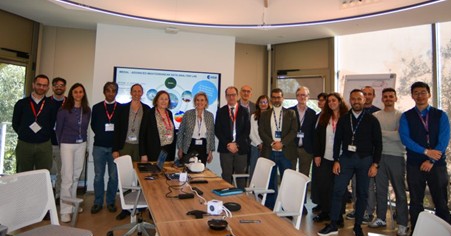In this talk I will introduce fractional differential operators, showing that these operators naturally emerge in the framework of Continuous-Time Random Walk models. Then, I will briefly recall the main properties of fractional Caputo derivatives and some relevant results about time-fractional diffusive equations. Finally I will show some recent applications of fractional calculus in radiative transfer models.
Collegamento WEBEX:
cnronline.webex.com
“Partecipando a questo incontro, accetti che lo stesso venga registrato e reso disponibile sul cloud di ISMAR. Dalla registrazione verranno eliminati lista dei partecipanti e chat”
Ricordiamo a tutti di tenere spento il proprio microfono. Accenderlo solo in caso di intervento.
In allegato la locandina del Seminario
Il gruppo seminari CNR-ISMAR, Alessandra Conversi (Lerici), Filomena Loreto (Bologna), Gianluigi Liberti (Roma) e Camilla Palmiotto (Bologna).













